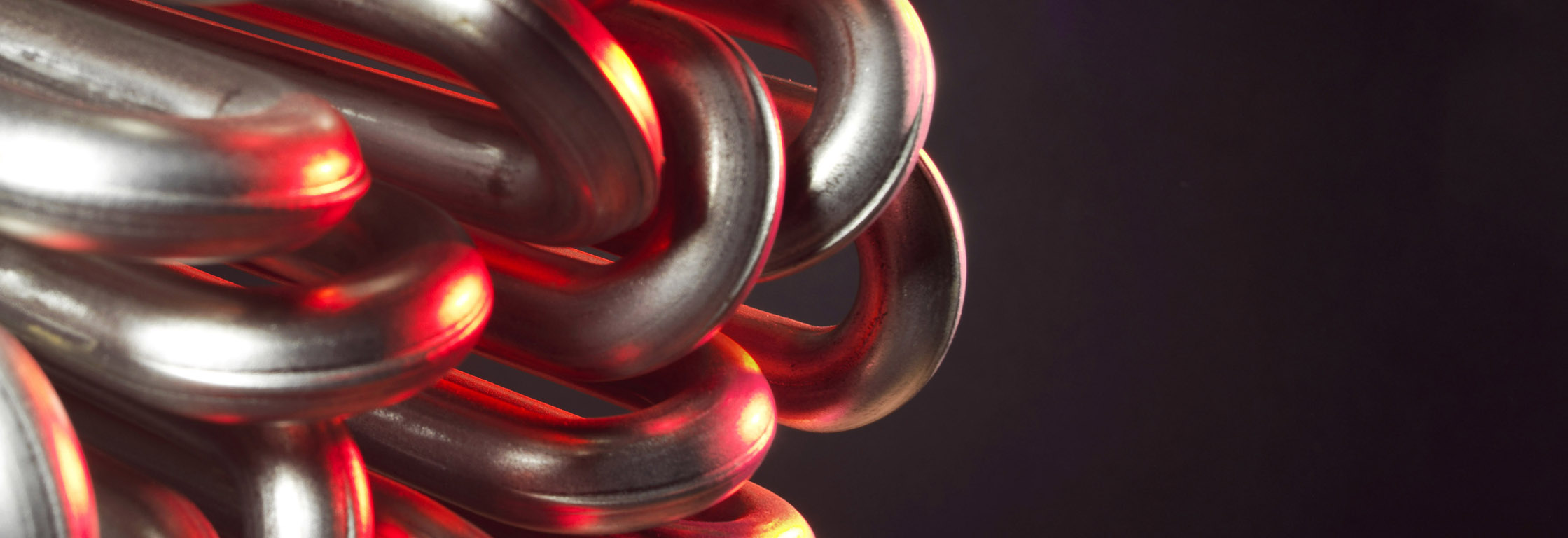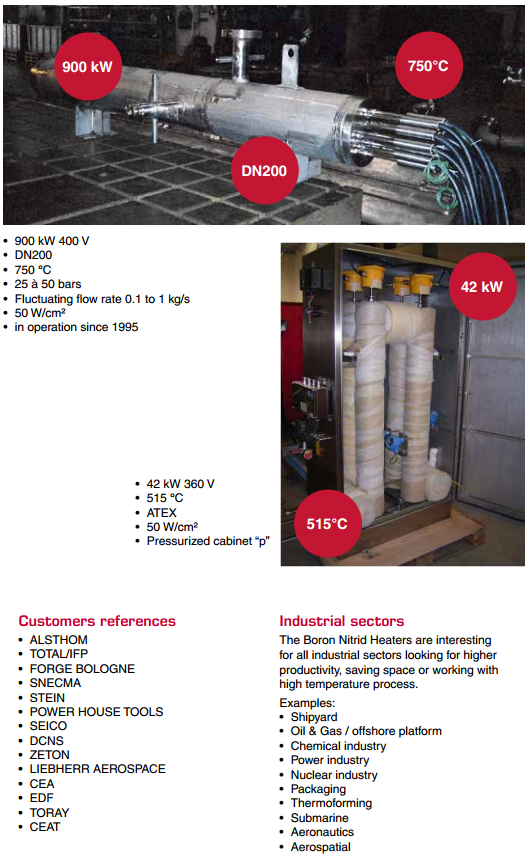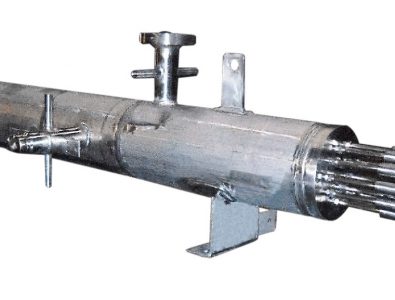
High flux in-line heaters

Smaller equipment
Less space, weight, heat loss, cost saving, reduced thermal inertia

Increased productivity
More heat in less time for shorter production cycles

High temperature
Longer heater life in extreme conditions, very high temperatures
Product overview
- Customized product
- Wire Ni-Cr 80/20
- W/cm² : 10 à 200 W/cm²
- Voltage: 24 V /48 V (DC), usually 110 to 750 V AC/DC, max medium voltage
- Operational temperature: from -270 °C to +1000 °C
- Pressure: superior to 300 bars
Advantages
- Temperature gradient improved by 10 compared to Magnesia
- Heating 100% homogeneous (Straight wire)
- Ring-shaped flow improves heat transfer up to 100 W/cm² and more
- Available in ATEX/IECEx
- Medium voltage
- No leakage current at high temperature
- Specific tube sheath to increase heat transfer coefficient and heat surface
- Reduced heater weight
Water
- Stagnant water, max load 8 -12 W/cm², material: copper, 321, 316L
- Circulating water, max load 10 -16 W/cm², material: copper, 316L, inc 800, inc 825
- Boric water, max load 8 W/cm², material: 316L
- Boiler water, max load 8 -16W/cm², material: 316L, inc 800, inc 825
- Chlorated water, max load 6 W/cm², material: inc 825
- Sea water, max load 3,5 -6 W/cm², material: inc 825, inc600
- Demineralized water / deionized / distilled / Softened,max load 4 -6 W/cm², material: 316L, inc 800, inc 825
- Domestic hot water, max load 4 -8 W/cm², material: copper, 316L, inc 825
- Caustic water (2%, 10%, <30%, 70%), max load 2,3-7W/cm², material: 316L, inc 825, inc 600
Oil
- Machine oil SAE 10, 30, 40 & 50, max load 2,0 – 3,5 W/cm², material: 316L
- Mineral oil , max load 0,5 – 3,5 W/cm² acc to temp, material: 321, 316L
- Lube oil, max load 2,3 W/cm², material: 321, 316L
Acid & corrosive fluid
- Acetic acid, max load 6W/cm², material: 316L, inc 825
- Boric acid, max load 6W/cm², material: inc 825
- Chloric, Hydrofluoric, Nitric, Sulphuric acid, max load 1,5W/cm², material: teflon coat
- Boric acid, max load 6W/cm², material: inc 825
- Alkaline bath, max load 6W/cm², material: 321 (no corrosive compound), 316L
- Phosphate bath, max load 4W/cm², material: 316L,inc 825
Glycol
- Ethylene glycol,Propylene glycol, 4 to 8 W/cm² acc to concentration, material: 321, 316L
Others
- Asphalt, tar, and other heavy or highly viscous compounds, max load 0,5 -1,5W/cm², material: 316L
- Milk, max load 0,3W/cm², material: 316L
Gas
- Air, max load 0,1 -8W/cm² acc. to sheath temp., material: 321
- Circulating air, max load 0,1 -8 W/cm² acc. to sheath temp., material: 309
- Natural gas, max load 0,1 -8 W/cm² acc. to sheath temp., material: 321, 316L
- Argon, nitrogen, W/cm² acc. to sheath temp., material: 321, 316L, inc 825, inc 600
- Propan, butane, W/cm² acc. to sheath temp., material: 321, 316L
- Oxygen, hydrogen, W/cm² acc. to sheath temp., material: 316L
Solids
- Mass of steel or stainless steel (bolt)
Technical description
- Heating element tube diameter according to application:
- High flux heating element : 8.5, 16, 19 mm
- Bolt heater: 10.7, 11.7, 12.2,15.7, 17.7, 19.7, 21.6, 24.6, 29.6 mm
- Tube material: Inox (321, 316L, 309), Incoloy 800 et 825, Inconel 600
- Wire Ni-Cr 80/20 (Max 1100°C on wire)
- Straight shape: possibility to bend only in cold part, max angle 90°
- Electrical connections on the same side 1Ph or 3 Ph.
- Enable to have circular heat exchange in case of circulation heater
- Temperature control can be done by a removable thermocouple in a sleeve located in the heart of the heater.
- High conductivity of boron nitrid (gradient de T°C de 4 à 5°C) between wire and tube
- Corrugation possible (tube thickness ~2 mm) , heat exchange surface increased/speed (Re and Prandtl number)
Picture to be added
Link to High flux Bolt heater
Link to Power control panel


